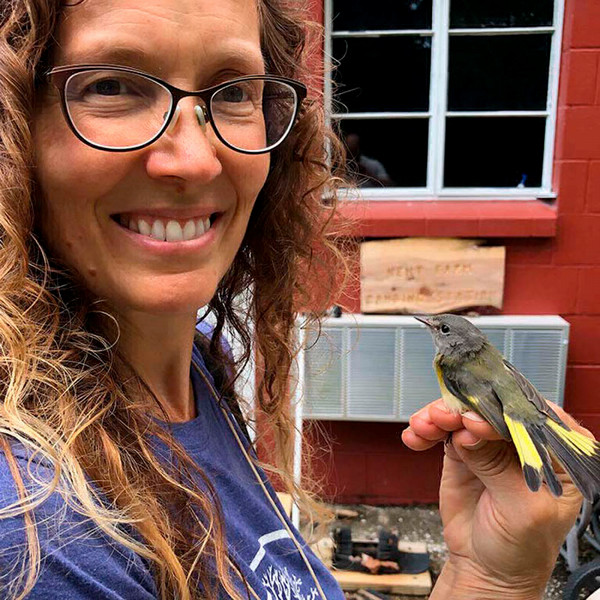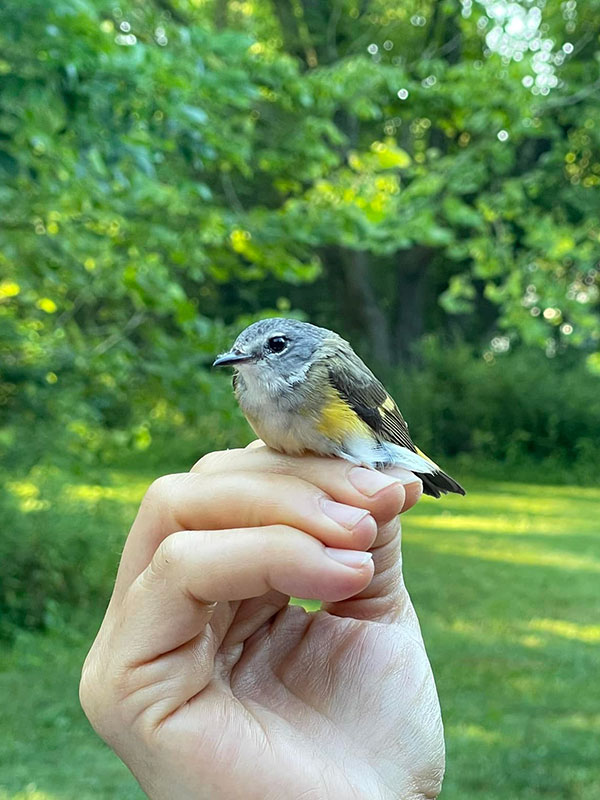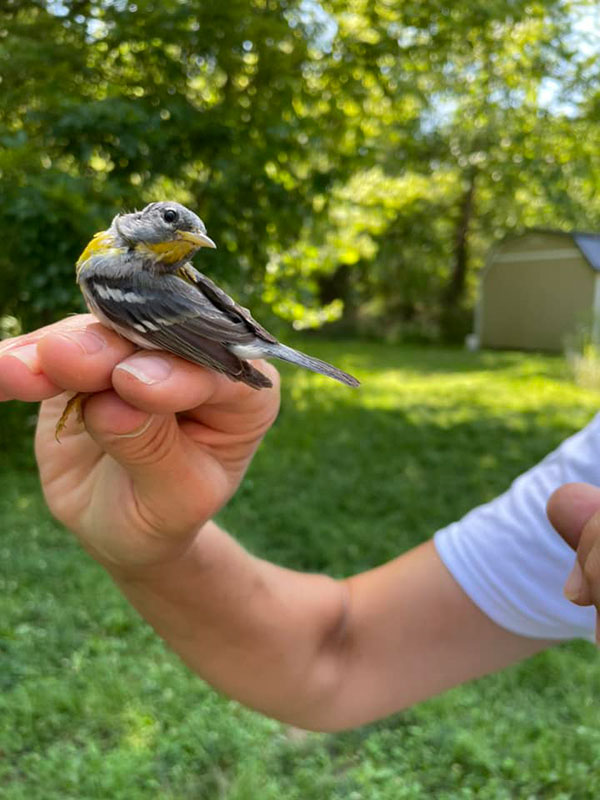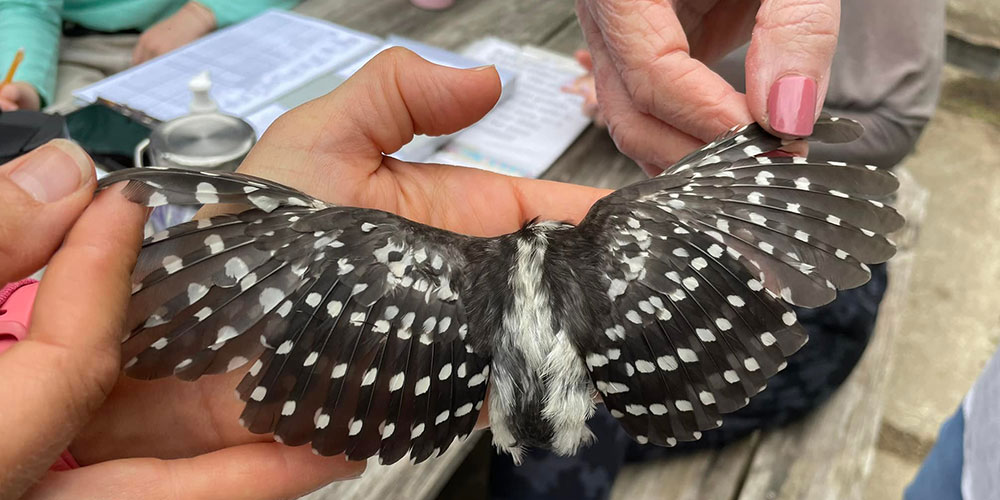This season was our eighth, and we hosted 9 banding sessions which captured a total of 318 birds. At Kent Farm we have banded over 1,600 individuals and recaptured nearly 700, for a total of 2,337 birds netted!
Over the last eight summers we have seen some interesting trends. Specific birds have decreased on our site, including the common yellowthroat, which is being banded at less than 50% of the rate from when we started. Other families, including woodpeckers, were not banded at all in the first few years and have now become more common. Some species appear only once or twice over eight years, such as the blue grosbeak, scarlet and summer tanagers. Others appear every few years, like the prothonotary warbler and northern parula. Some of our particularly unique bird species include the prairie warbler, the blue-winged warbler, the indigo bunting and the worm-eating warbler.
Our data from Kent Farm is just one in an international constellation of over 1,200 stations. When data is gathered over space and time, clear patterns can develop. Professional and amateur scientists can access these data and use it to influence policy to protect these precious creatures. At the same time, we are able to share the beauty and awe of these amazing migrant and resident birds with hundreds of visitors whose lives are changed by their up-close encounter with these winged wonders. This ability to have an effect both on a local and global scale is what motivates our work at Kent Farm, bringing us back summer after summer, just like our breeding migrants.
If you are interested in supporting MAPS or the MCB, read more here.





